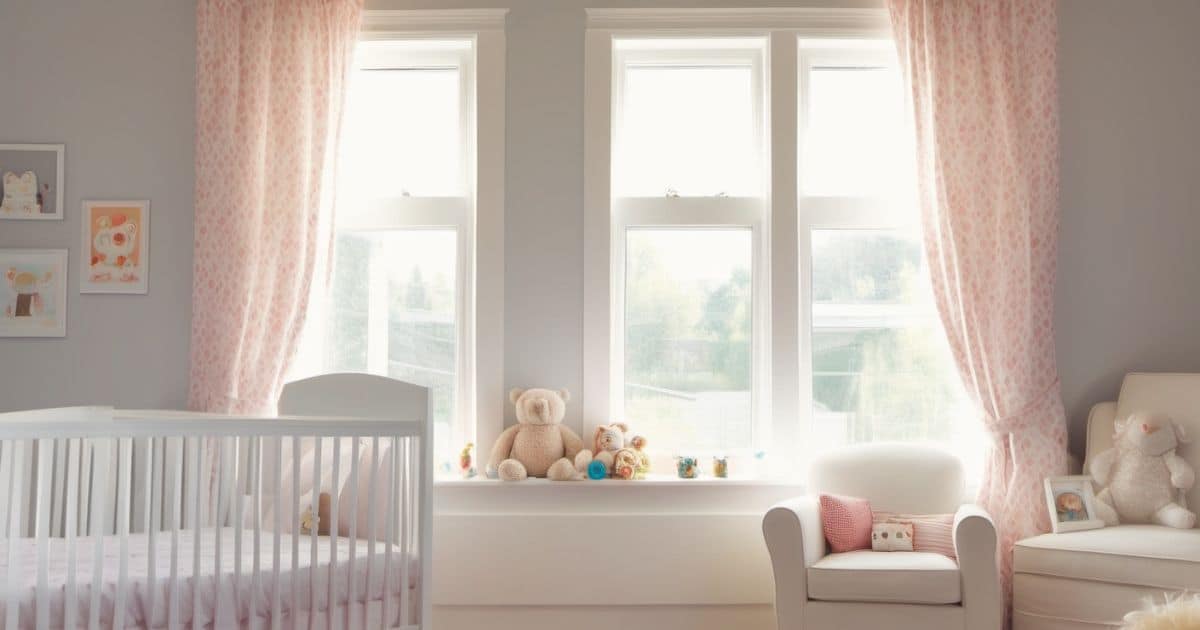If you’ve ever found yourself turning to Google for answers on baby sleep, from questions like “When should my baby sleep?” to “How do I establish a sleep routine for my little one?” chances are you’ve come across the trending concept of “wake windows.” But what exactly are wake windows, and can grasping their significance truly enhance your baby’s sleep quality?
Within this all-encompassing guide, we’ll sift through the information clutter, providing you with a clear understanding of baby wake windows. Armed with this knowledge and practical tools, you’ll be empowered to foster improved sleep for your precious little one.
What are wake windows?
In contemporary parenting discussions, the term “wake window” has gained popularity, representing the time frame during which a baby remains awake between sleep periods. Essentially, it spans from the moment your baby wakes up to their subsequent nap or bedtime. Modern advice encourages parents to carefully monitor age-appropriate wake windows, aiming for well-timed naps.
The concept emphasizes the proactive approach of putting your baby to bed within the designated wake window, eliminating the need to solely rely on traditional sleep cues such as yawning or eye-rubbing. This strategic approach helps prevent an overtired baby scenario, ensuring a smoother sleep routine.
Baby Wake Windows by Age

Numerous parents often rely on visible signs like drooping eyelids or yawns to gauge their baby’s readiness for sleep, but waiting for these cues may prove too late. (Babies entering an overtired state can trigger a fight-or-flight response, releasing cortisol and keeping them alert.)
The ideal scenario is to put your little one to bed just as, or slightly before, signs of sleepiness appear. While it’s true that many tired babies can doze off anytime, anywhere, others can swiftly transition from cheerful alertness to tired distress. This is where considering age-appropriate wake windows becomes crucial, helping you navigate around the challenges of overtired sleep.
Dr. Harvey Karp’s Guide to Wake Windows by Age
| Age Range | Wake Window Duration |
| Newborn | 45 to 60 Minutes |
| 1 to 2 Months | 1 to 2 Hours |
| 3 to 4 Months | 75 Minutes to 2.5 Hours |
| 5 to 7 Months | 2 to 4 Hours |
| 8 to 10 Months | 2.5 to 4.5 Hours |
| 11 to 14 Months | 3 to 5 Hours |
| 15 to 24 Months | 4 to 6 Hours |
Read this Post: Boy Baby Names
How do wake windows help a baby sleep?
Harness the power of wake windows as a valuable tool in your baby’s arsenal for quality sleep. Setting sleep expectations can be immensely beneficial, although it’s important to acknowledge the variability in babies’ sleep patterns.
Some infants operate like clockwork, while others exhibit a less predictable rhythm day-to-day. Whether your baby tends to stay within the suggested wake window or happily extends their awake time, here’s the optimal way to make the most of wake windows:
1. Time it Right:
Initiate the clock as your baby wakes up, aligning with their age-appropriate wake window.
2. Spot Sleepy Cues:
Ensure your baby is tucked in for a nap or bedtime before exhaustion sets in. As the wake window approaches its end, be on the lookout for signs like reduced activity, yawning, staring, blinking, or eye-rubbing. Keep a close eye on both the clock and your baby.
3. Bedtime Indication:
Once those telltale signs of sleepiness emerge, it’s bedtime.
4. Record the Moments:
Note when the initial signs of drowsiness appear and aim to put your baby down about 5 minutes earlier for the next nap. The ultimate objective is to have your baby in bed before signs of tiredness become evident. (Learn effective ways to track your baby’s sleep here.)
5. Fine-Tune:
Should your baby enjoy a brief nap (less than an hour), adjust their subsequent wake window accordingly. Conversely, if your little one indulges in an extended nap, extend their next wake window. For example, if bedtime typically falls in the middle of the wake window, consider an earlier bedtime after a short nap and a later bedtime following a lengthy one.
Still feeling a bit puzzled? Let’s break it down: Imagine you have a 4-month-old who just woke up from their late morning nap. The key is to kick off the wake window countdown right away. (Note that wake windows commence upon your sweetheart waking up—not after a nursing or bottle feeding session.) Referring to the provided chart, you can estimate that your baby will stay awake for roughly 75 to 120 minutes before needing another nap.
So, as you approach the 75-minute mark, be attuned to those subtle “I’m tired” signals from your little one. If, let’s say, your baby yawns around the 90-minute mark, it’s bedtime. Jot down a reminder that your baby should hit the hay approximately 85 minutes into the next wake window.
What are signs Baby is tired?

Understanding a baby’s sleep cues and wake windows is key to fostering a harmonious sleep routine. By identifying the subtle signals indicating your little one is getting tired and approaching the end of their wake window, you’ll be better prepared to facilitate bedtime at the optimal moment. Keep an eye out for these early signs that your baby is ready for sleep:
Signs of Fatigue in Babies:
Additional Indicators of Sleepiness in Infants:
Will wake windows solve my baby’s sleep issues?

Being attuned to your baby’s individual rhythms within the framework of wake windows serves as a valuable enhancement to your arsenal of strategies for promoting quality sleep. This arsenal should encompass the well-established 5 S’s method, a time-tested approach for soothing babies and facilitating restful sleep:
a. Swaddling:
Enveloping your baby snugly, akin to a delightful miniature burrito, before bedtime recreates the secure ambiance they cherished in the womb. Swaddling not only diminishes the startle reflex but also enhances the responsiveness of infants to other calming methods, promoting better sleep.
b. Shushing:
Recalling the soothing environment of the womb, where muffled sounds prevailed, shushing becomes a valuable tool for baby tranquility. Replicate those comforting tones with a gentle, rumbling white noise to foster a serene sleep environment.
c. Swinging:
Life in the womb is characterized by gentle jiggling, making slow rocking an ideal method to keep peacefully quiet babies calm. For infants in the midst of a squawk, swift, delicate motions prove effective in providing soothing comfort.
d. Side or Stomach Positions:
Embracing your little one in a side, stomach, or over-the-shoulder position serves as a fantastic way to induce relaxation before gently placing them on their back for a secure sleep.
e. Sucking:
The act of sucking contributes to a reduction in a baby’s heart rate, blood pressure, and stress levels, culminating in improved sleep. For breastfeeding parents, consider introducing a bedtime pacifier once nursing is well-established for added comfort.
While dietary guidelines serve as a valuable tool in promoting healthy eating habits and aligning with nutritional needs, they constitute only one aspect of the broader picture. Integrating other wellness-promoting practices, such as maintaining a regular exercise routine, cultivating a supportive social environment, and addressing any underlying health concerns (such as stress or sleep issues), can further contribute to overall well-being.
It’s crucial to recognize that each individual is unique, and their nutritional requirements may not always adhere strictly to recommended guidelines. Some people may benefit from dietary adjustments, either consuming more or less of certain nutrients, and these needs may evolve over time due to factors like age, lifestyle changes, or health conditions. Embracing adaptability, patience, and a willingness to tailor dietary choices to individual needs are key to achieving optimal health and wellness.
Final Thoughts
Understanding wake windows can be a game-changer for establishing healthy sleep habits and schedules for your baby. By tuning into your little one’s natural sleep cycles, recognizing their sleepy cues, and timing naps and bedtimes accordingly, you’ll be better equipped to promote better sleep and avoid the challenges that often arise from overtiredness.
However, wake windows are just one piece of the puzzle when it comes to infant sleep. Incorporating other sleep-promoting practices, such as establishing a consistent bedtime routine, creating a conducive sleep environment, and addressing any underlying issues, can further enhance your baby’s sleep quality.
Remember to approach wake windows with flexibility and patience, as every baby is unique, and their sleep patterns may not always conform to the prescribed ranges. By staying attuned to your little one’s individual needs and rhythms, you’ll be well on your way to fostering a well-rested and happy family.

Hey there! I have 5 years of experienced Familynexa Bringing families closer together through shared experiences, advice, and memories. Building connections that last lifetimes.












